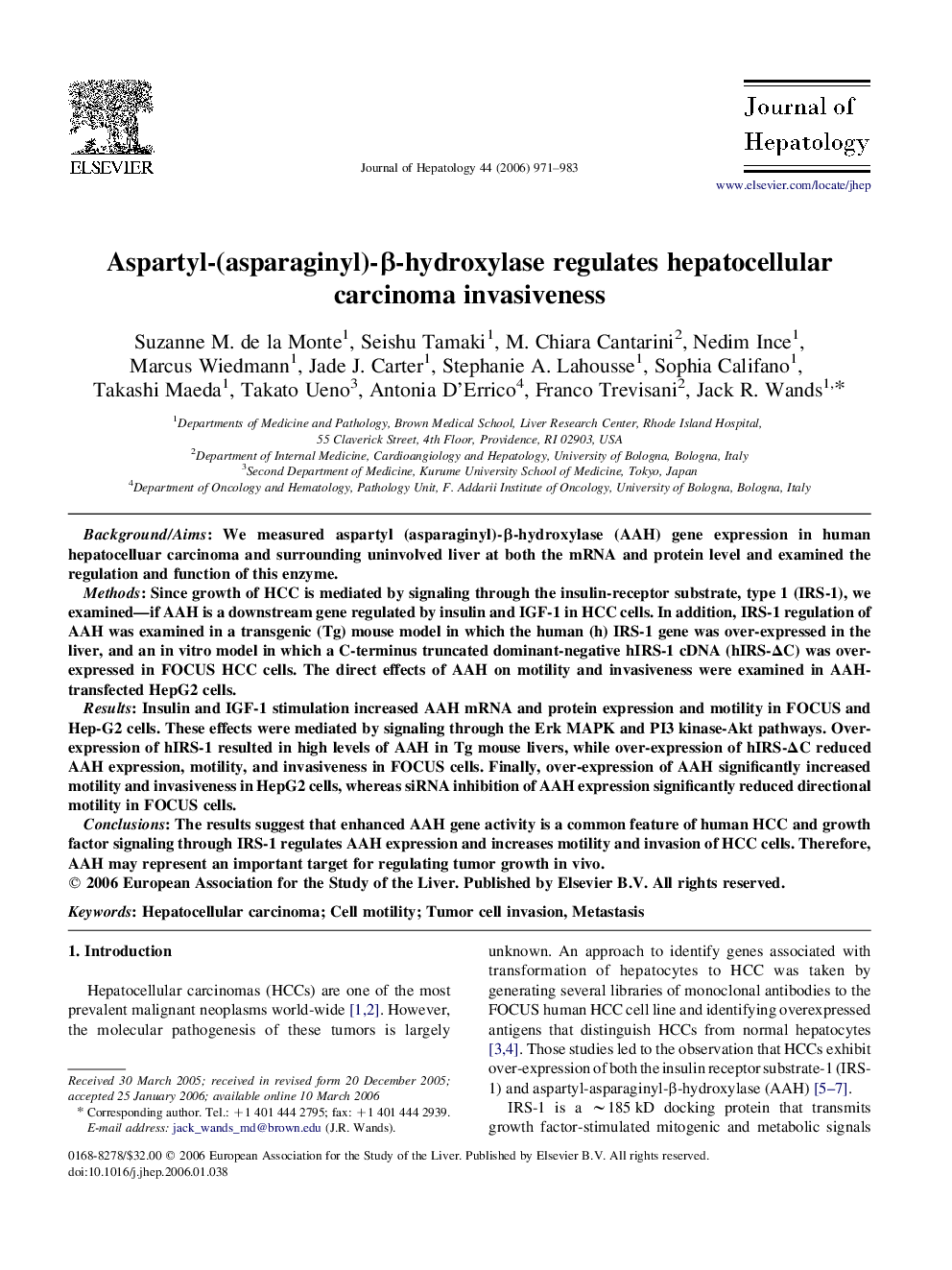| کد مقاله | کد نشریه | سال انتشار | مقاله انگلیسی | نسخه تمام متن |
|---|---|---|---|---|
| 3314950 | 1211228 | 2006 | 13 صفحه PDF | دانلود رایگان |

Background/AimsWe measured aspartyl (asparaginyl)-β-hydroxylase (AAH) gene expression in human hepatocelluar carcinoma and surrounding uninvolved liver at both the mRNA and protein level and examined the regulation and function of this enzyme.MethodsSince growth of HCC is mediated by signaling through the insulin-receptor substrate, type 1 (IRS-1), we examined—if AAH is a downstream gene regulated by insulin and IGF-1 in HCC cells. In addition, IRS-1 regulation of AAH was examined in a transgenic (Tg) mouse model in which the human (h) IRS-1 gene was over-expressed in the liver, and an in vitro model in which a C-terminus truncated dominant-negative hIRS-1 cDNA (hIRS-ΔC) was over-expressed in FOCUS HCC cells. The direct effects of AAH on motility and invasiveness were examined in AAH-transfected HepG2 cells.ResultsInsulin and IGF-1 stimulation increased AAH mRNA and protein expression and motility in FOCUS and Hep-G2 cells. These effects were mediated by signaling through the Erk MAPK and PI3 kinase-Akt pathways. Over-expression of hIRS-1 resulted in high levels of AAH in Tg mouse livers, while over-expression of hIRS-ΔC reduced AAH expression, motility, and invasiveness in FOCUS cells. Finally, over-expression of AAH significantly increased motility and invasiveness in HepG2 cells, whereas siRNA inhibition of AAH expression significantly reduced directional motility in FOCUS cells.ConclusionsThe results suggest that enhanced AAH gene activity is a common feature of human HCC and growth factor signaling through IRS-1 regulates AAH expression and increases motility and invasion of HCC cells. Therefore, AAH may represent an important target for regulating tumor growth in vivo.
Journal: Journal of Hepatology - Volume 44, Issue 5, May 2006, Pages 971–983